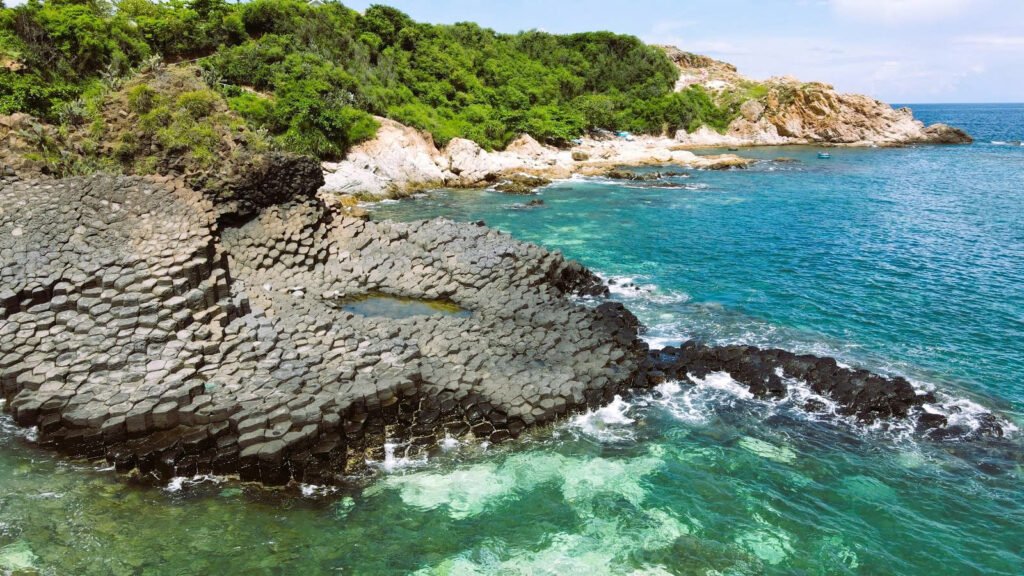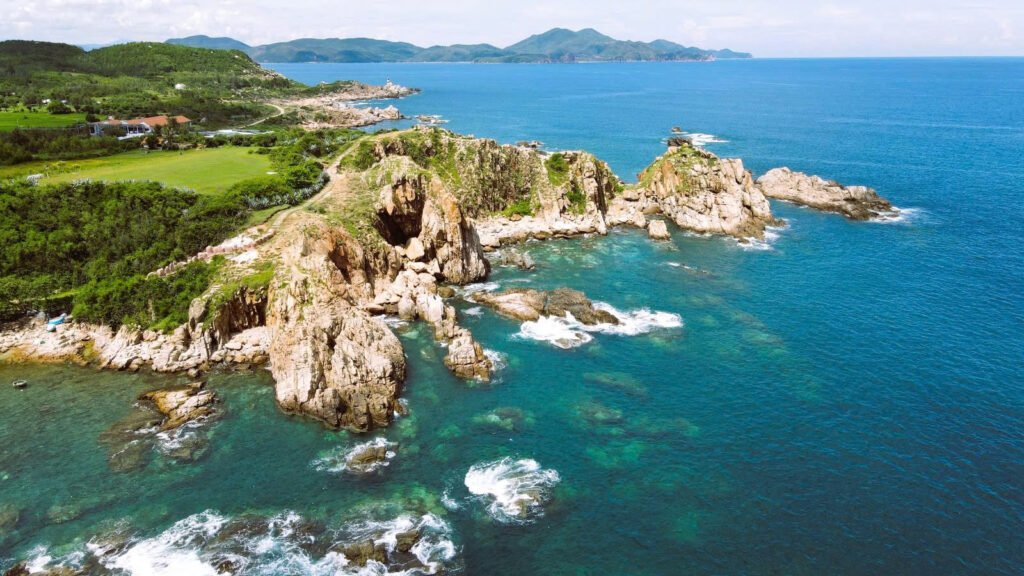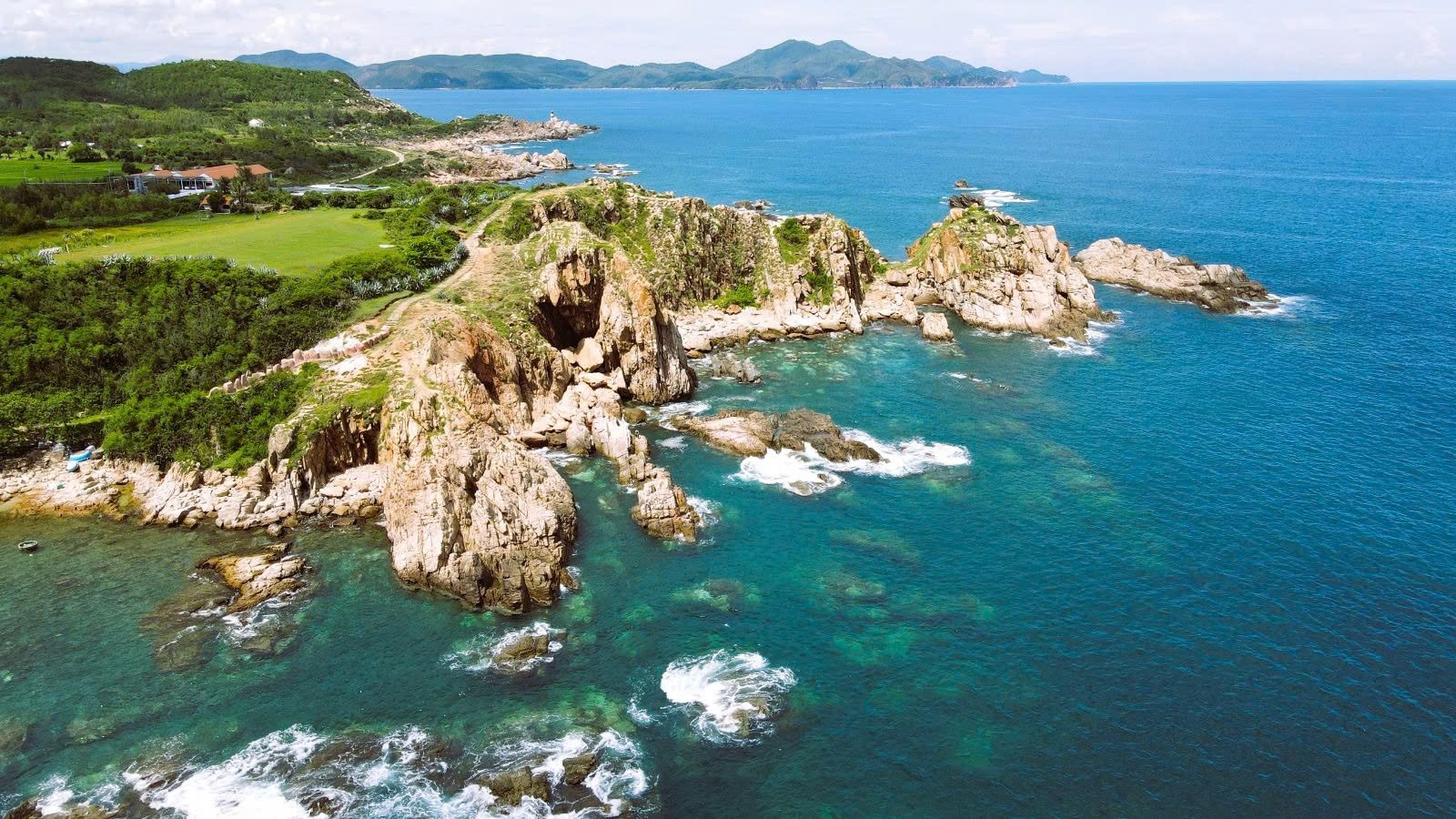A Hidden Natural Wonder on Vietnam’s South-Central Coast
In a country known for its dramatic landscapes and rich cultural heritage, Ganh Da Dia (translated as “The Reef of Stone Plates”) is a standout natural formation that remains remarkably under the radar. Located in Phu Yen province — a quieter, lesser-known region on Vietnam’s south-central coastline — this stunning site offers a rare glimpse into ancient volcanic history, set against the backdrop of peaceful seas and rural life.
Ganh Da Dia isn’t just another pretty spot along the coast; it’s a geological phenomenon formed millions of years ago. And perhaps what makes it even more special is how untouched and serene it still feels today — far from the bustle of mass tourism.
The Science Behind the Beauty
Situated in An Ninh Dong commune, Tuy An district, about 30 kilometers north of Tuy Hoa City, Ganh Da Dia is composed of thousands of black basalt columns tightly packed together. These rock formations appear almost man-made due to their perfect hexagonal and polygonal shapes, but they were in fact created by nature alone.
The site was formed when molten lava flowed from volcanic eruptions into the sea. As the lava met the cold water, it cooled rapidly, causing it to contract and fracture into polygonal columns — a rare and striking process known as columnar jointing. The result is a surreal, mosaic-like pattern that stretches out toward the ocean, resembling a massive staircase leading into the water.
While comparisons are often made to the Giant’s Causeway in Northern Ireland or Fingal’s Cave in Scotland, Ganh Da Dia offers something distinct: a quiet, unspoiled experience immersed in natural beauty and Vietnamese coastal charm.

A Quiet Escape for Nature Seekers
Ganh Da Dia is not just a feast for the eyes — it’s also a retreat for the soul. With no loud crowds, no flashy attractions, and no towering resorts, it offers a rare kind of peace. You’ll hear only the gentle crashing of waves, the whistle of the sea breeze, and perhaps the distant chatter of local fishermen preparing their boats.
Sunrise and sunset are particularly breathtaking here. As the light shifts across the basalt surface, the stones seem to glow — casting sharp shadows and soft highlights that photographers and nature lovers alike will appreciate. It’s a moment of quiet reflection in a setting that feels almost timeless.
Life Along the Coastline
Just a short distance away, daily life in the fishing villages unfolds in a rhythm largely unchanged for generations. Early morning scenes include fishermen launching wooden boats, pulling in their nets, and sorting the day’s fresh catch. Locals often sell grilled seafood, including squid, shrimp, and clams, prepared with simplicity and authenticity — the perfect post-hike meal.
The surrounding area is also home to several other attractions worth exploring. Visitors can relax on the golden sands of Bai Xep Beach, enjoy birdwatching and boating at O Loan Lagoon, or stop by Mang Lang Church — one of the oldest Catholic churches in Vietnam, built in the 19th century with stunning French Gothic architecture.

How to Reach Ganh Da Dia
- By Car or Motorbike: From Tuy Hoa, the journey takes about 45 minutes via scenic coastal roads lined with rice fields, beaches, and rural villages.
- By Bicycle: Adventurous travelers will enjoy the challenge and reward of cycling to the site while soaking in the beauty of the Phu Yen countryside.
- Guided Tours: Many local tour agencies offer half-day or full-day trips to Ganh Da Dia, often paired with visits to nearby attractions.
Best Time to Visit
For the best experience, plan your trip between January and August, during the dry season. The weather is warm and sunny, and the ocean is generally calm. Visiting during the rainy season (September to December) is not recommended, as the basalt rocks can become slippery and dangerous, and waves may be rough.
To capture the most beautiful lighting — and avoid the midday heat — aim to visit early in the morning or late in the afternoon.
Tips for a Safe and Enjoyable Visit
- Footwear matters: Wear sturdy walking shoes or hiking sandals with good grip — the rocks are uneven and can be slippery when wet.
- Stay sun-safe: Bring a hat, sunscreen, and plenty of water, especially during hot months.
- Respect the environment: Avoid climbing the rock formations unnecessarily or removing stones. Help protect the site for future visitors.
- Bring a camera: Whether you’re a professional or just using your phone, the unique formations and lighting offer incredible photo opportunities.
Why Ganh Da Dia Deserves a Spot on Your Vietnam Itinerary
In a world of fast-paced travel and over-crowded attractions, Ganh Da Dia stands out as a place where time seems to slow down. It’s where geology, history, and culture intersect — not in a museum or a textbook, but out in the open, along the quiet Vietnamese coast.
For travelers looking to connect with nature, avoid the crowds, and experience something truly unique, Ganh Da Dia is a destination that promises beauty, peace, and inspiration.




